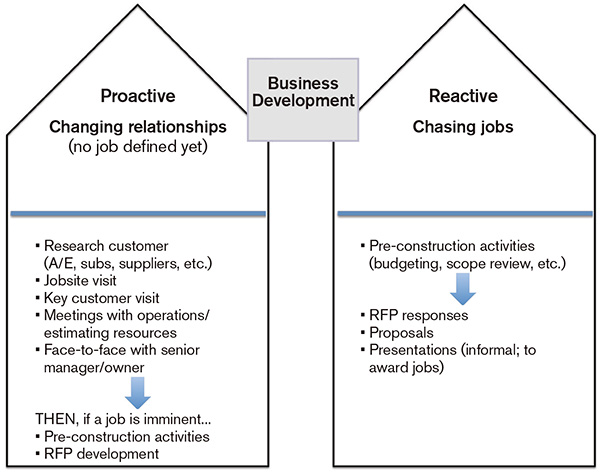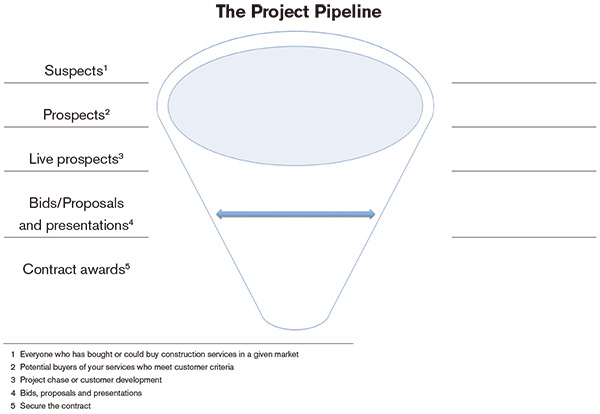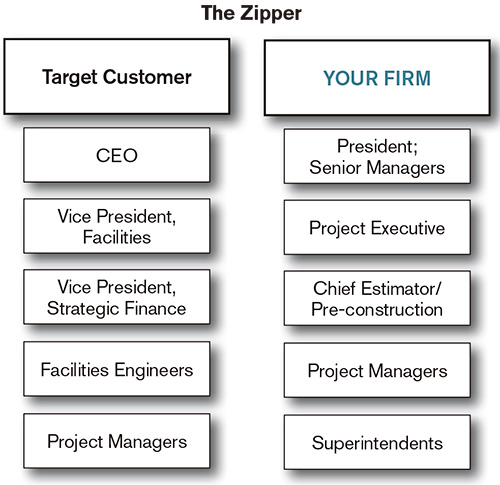
Not long ago, predicting backlog was like picking the winning Powerball numbers. Not only was it risky to make assumptions on future work, it was also random and haphazard. Even with the possibility of being tagged as a low bidder, there was no certainty that projects would move forward. With a more stable economy, there is greater probability that projects will receive the green light. Does building backlog have to be so dependent on market conditions? Interestingly enough, there were plenty of contractors during the recession that defied this conventional wisdom. They did not fall victim to keeping pace with the economy. For every uptick, contractors become gluttonous of work. With every downturn, contractors become thirsty for work. But how is it that some firms defy this trend?
Strategy Comes First
One characteristic of these firms is a strong understanding of market conditions. It is easy to follow the market leaders and simply fall in lockstep by doing the work that is popular today. Great firms do the research. While the best-in-class firms probably do not have a shiny crystal ball, they do engage in examining data and making fact-based strategic decisions. Every day, the market or the context shifts. Whether it is relating to net neutrality, immigration policies, stock valuations, new technology or employment rates, the greatest leaders develop hypotheses on where to invest.
For instance, during the height of the green movement, firms scrambled to become LEED-accredited professionals. For every firm that is just getting on board with sustainability, there are other firms that are finding the new green solution. Leaders are not simply concerned with constantly keeping up with their peers, but also using data to chart a new path.
Relationships Instead of Projects
A second trait of best-in-class firms is maintaining focus on strategic relationships. By assuming a firm has done the requisite research on the right markets with the right opportunities, developing relationships becomes a much easier prospect. Hunting with a specific target in mind might take longer, but with a patient approach, the bounty is often worth the extra time invested. Firms that develop relationships have the ability to learn critical drivers, particularly buying trends associated with customers. An electrical contractor that develops strategic relationships in the medical community quickly learns the keys are patient safety and infection control. Developing an appropriate value proposition around these tenets tends to illustrate a contractor’s long-term value, rather than being the lowest number on bid day. As portrayed in Figure 1, true business development leaders are proactive.
 Figure 1. Proactive and reactive business development
Figure 1. Proactive and reactive business developmentAdditionally, relationships shouldn’t be exclusive to the general contractors, construction managers or end users that make the final decisions. Leveraging key relationships with influencers is also paramount to running a good business. This might include members within a niche or marketplace such as designers, engineers or financiers. It is easy to be an industry friend when times are good, especially when everyone knows a particular influencer figuratively holds the keys to the city. Keeping relationships fresh is challenging, but the best contractors do not abandon someone simply because they might be down at the moment. If a market sector has promise and an influencer has similar strategic aspirations, it might become a match made in construction heaven.
Why Should You Win?
An introspective examination of one’s firm and what it offers should be conducted on a routine basis. What does your firm do that Brand X does not? Sometimes, firms take an “ignorance is bliss” perspective, mainly because they are afraid to confront any brutal feedback. You may not like the feedback, but the moment the customer stops providing it is the moment that you no longer have a client. Remember, if you don’t ask your customer what they like or don’t like about your performance, your competitor will. Consider an end-of-project review process that provides for constructive feedback:
- What did we do best on this project?
- What should we stop doing as a course of business or operations?
- What can we do to change clients into raving fans?
- What is your favorite step that your vendors take for you?
- How does your firm feel about its future in the market?
- Are there any areas of team training we need to revise internally?
Keep it simple. Make this a safe zone.Avoid being defensive when feedback is received. Be sure to thank them for the feedback, though. It takes courage to give constructive criticism. The best defense will be what you do with the feedback. If you don’t make any changes, the customer will feel as if their feedback fell on deaf ears. When they see a transformation, the firm’s value is further amplified. Lastly, use this opportunity to get market intelligence. Never discount an opportunity to gain more data to support your firm’s strategy. Data that comes straight from your clients is customized information your business needs to have in its toolbox at all times.
 Figure 2.
Figure 2.How Do You Measure Up?
Building backlog should not be limited to the dollar value associated with contract awards. Firms should look at all available lines in the water, as well as what has been hauled in the boat. For instance, how does your company stack up in terms of potential opportunities? Best-in-class firms utilize some sort of CRM system, not only to help define these relationships, but also to attach probabilities to help gauge the health of the backlog. A president or CEO can rest easier knowing that the 35 live prospects in the hopper have a 75-percent probability of yielding work within four to six months. Simple mathematics provide some predictions for the
business leaders.
 Figure 3. The Zipper
Figure 3. The ZipperThe Zipper
For some firms, one estimator may know one procurement director, and the relationship barely extends any further. Yet, the procurement director is just one person in an organization of thousands with multiple offices. Consider the concept of the zipper, shown in Figure 3. How well do you know your customers? How deep are the relationships and ties? How frequently do you reach out to your customers, whether you are doing business with them currently or not? If they are a firm’s best customer, why does only one person have a connection? The zipper may also have multiple forks or legs. For instance, if a firm has multiple offices, how should the firm penetrate multiple assets?
The one inalienable truth to successful backlog building is the fact that the best-in-class firms have people within them that always view themselves as customer managers. Regardless of where they sit, the market leaders have instilled a business development mindset into everything they do. Everyone in the firm is responsible for sales, even if that just means selling the firm through its associate’s actions. Often, those daily interactions can be just the extra push needed for customers to choose your firm.
